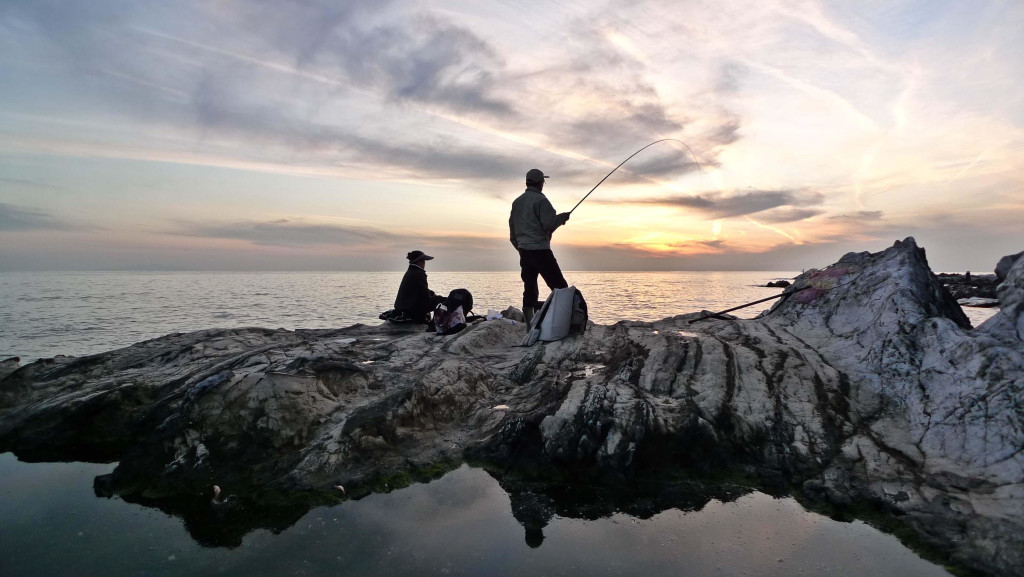For centuries wealthy Tokyoites have maintained weekend homes in Kamakura, Zushi and Hayama, and locals know the emperor is in residence when the police presence increases by an order of magnitude. The seaside towns of the Shonan Coast have developed accordingly, offering a bit of Tokyo’s Naka-Meguro vibe, with plenty of bars and restaurants combined with surfboard and windsurfer (‘sup, dude!) rental shops.
A slightly more bucolic experience can be had down the coast in Yokosuka and Miura, famous for maguro donburi (tuna rice bowl) and Miura daikon. A dozen tiny fishing ports dot both the Tokyo Bay and Sagami Bay coasts, so there are plenty of good tuna restaurants, and in the far south, Misaki Port is worth a visit. If you’re lucky you can see long-haul fishing boats unloading frozen tuna, and it’s impossible to escape the fish market–where the salespeople could sell ice to Eskimos–without buying something. To celebrate your piscatorial purchases, take a break at Misaki Donuts, a very welcome newcomer to the very sleepy port town.
If fish are not your thing, the Miura peninsula is famous for windsurfing in Miurakaigan. There is good hiking through the fields and along the rocky coastline, a nice old-style (i.e. 1970s vintage) marine park in Aburatsubo, and in Kannonzaki, a more recent edition of a Tokugawa-built lighthouse. Kannonzaki is also home to what is believed to be the fastest roller slide in Japan. It’s a 20-minute walk from the carpark in Kannonzaki Park, so it’s never crowded. Grab a rubber mat from the box at the start (to avoid getting a badly blistered bottom) and see where it fits into your personal ranking of Japanese roller slides. A few minutes from Kannonzaki Park is the Yokosuka Museum of Art in a surprisingly attractive modern building, featuring a sculpture garden on the front lawn and a stylish café.
No matter how you spend the day, before you head home you’ll want to pick up some omiyage, and if you haven’t spent all your money on fish at the market in Misaki Port, you might want to stop by the Sukannagosso Farmer’s Market on the Sagami Bay side of the peninsula in Yokosuka City. Due to the maritime climate, the growing season is year-round; farmers grow cabbage or daikon in winter, and a more diverse range of produce in spring, summer and autumn. They grow broccoli, carrots, onions, leeks, potatoes, Chinese cabbage, cauliflower, kabocha, cucumbers, zucchini, tomatoes, kuromame, red shiso, and rice (for personal consumption, not on a commercial scale).
You haven’t lived until you’ve ridden a Japanese train carrying (in summer) three watermelons or (in winter) three daikon.
English Info on the web: Miura Sightseeing Website
GETTNG THERE
If you want to spend a day in southern Miura Hanto, you’ve got two options: drive (and if it’s summertime, be prepared to spend a few hours–at least–in traffic) or take the train. The train is the Keikyu Line, out of Shinagawa, passing through Yokohama and Yokosuka, and terminating in Misakiguchi and Uraga. From Misakiguchi or Miurakaigan (the second last stop, and last stop on the Tokyo Bay side of the peninsula), you can walk, or take a Keikyu bus somewhere more remote.


